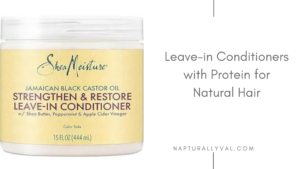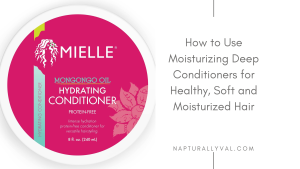Hey curlfriend! If you’re on a journey to grow your 4C locs long, strong, and healthy, you’ve come to the right place. Growing locs is a beautiful experience, but it requires patience, consistency, and the right care routine. 4C hair is naturally coily and prone to dryness, so giving your locs the love they deserve is key to achieving length and health. Let’s dive into the ultimate guide to growing your 4C locs long and thriving.
From Short to Shoulder-Length: How To Grow Natural Locs Longer
1. Start With a Strong Foundation
Before you even think about length, it’s important to start your locs the right way. The foundation of healthy locs is crucial to avoid unnecessary breakage and thinning down the line.
Choosing the Right Starter Method
- Two-strand twists: Great for a structured, even loc formation.
- Coils: Perfect for a more defined look with tight curl patterns.
- Freeform: A natural, low-maintenance way to let your locs form organically.
- Interlocking: Ensures a strong base but can be too tight if not done correctly.
Make sure your hair is clean and well-moisturized before starting the locking process. Avoid products that cause buildup or residue, as they can stunt growth and lead to loc thinning.
Related post: how to starts locs on 4C natural hair

2. Keep Your Scalp Clean and Healthy
A healthy scalp = healthy locs. Since 4C hair is prone to dryness, you want to strike a balance between cleanliness and maintaining natural oils.
How Often Should You Wash?
- Every 2-3 weeks: Washing too frequently can strip moisture, but waiting too long can lead to buildup and irritation.
- Use residue-free shampoo: This prevents product buildup that can make locs feel heavy and cause breakage.
- Massage your scalp: Stimulating blood circulation encourages hair growth and keeps the scalp healthy.
If you work out regularly or have an itchy scalp, consider using a dry shampoo or a light misting of diluted apple cider vinegar to refresh your locs between washes.
3. Moisturize, Moisturize, Moisturize!
One of the biggest struggles with 4C locs is keeping them moisturized. Dry locs can become brittle and prone to breakage, which prevents length retention.
Best Ways to Keep Locs Moisturized
- Use a lightweight leave-in spray: Water-based hydration is essential.
- Seal with oil: Natural oils like jojoba, castor, or avocado oil lock in moisture without buildup.
- Avoid heavy creams and butters: These can cause buildup and make locs feel sticky.
- Use a humidifier: If you live in a dry climate, a humidifier can help keep moisture levels balanced in your hair.
4. Protect Your Locs While Sleeping
Friction from cotton pillowcases can cause locs to dry out and weaken. Protecting your hair at night helps with length retention and keeps your locs neat.
How to Protect Your Locs:
- Wear a satin or silk bonnet/scarf: This reduces friction and locks in moisture.
- Use a silk pillowcase: If you’re not a fan of wearing head coverings at night.
- Pineapple your locs: For longer locs, loosely tying them up prevents tangling.

5. Retwist with Care
Over-twisting can weaken your roots and cause thinning over time, so it’s important to be gentle and space out your retwisting sessions.
Best Practices for Retwisting:
- Retwist every 4-6 weeks: This prevents excessive stress on your roots.
- Use lightweight gel or aloe vera: Avoid heavy waxes that cause buildup.
- Don’t twist too tightly: Tight retwisting can lead to traction alopecia and hair thinning.
- Let your locs breathe: If you don’t need a fresh retwist, embrace the semi-freeform look occasionally.
Related post: how often should you retwist natural locs.
6. Avoid Excessive Manipulation
Constant styling, pulling, and excessive tension can lead to weak locs and breakage. If your goal is long, healthy locs, it’s best to let them do their thing.
What to Avoid:
- Tight hairstyles: High ponytails, tight braids, or buns that pull on your roots.
- Frequent touching: Constantly twisting or pulling at your locs can cause thinning over time.
Low-manipulation styles like simple buns, loose ponytails, or leaving your locs down help them grow freely without unnecessary tension.
7. Maintain a Healthy Diet
Hair growth isn’t just about external care—it also comes from within. Eating a nutrient-rich diet supports strong and healthy locs.
Best Foods for Hair Growth:
- Protein-rich foods: Eggs, fish, beans, and nuts help strengthen hair strands.
- Iron and zinc: Leafy greens, lentils, and seeds promote strong hair growth.
- Vitamin E and Biotin: Avocados, almonds, and sweet potatoes nourish hair follicles.
- Drink plenty of water: Hydration is key for preventing dryness from the inside out.
If you struggle with hair thinning or slow growth, consider taking hair-friendly supplements like biotin or collagen to support healthy locs.
8. Be Patient and Trust the Process
Locs don’t grow overnight, and they go through different phases. The key is patience and consistency. Your locs will thrive if you give them time and proper care.
Phases of Loc Growth:
- Starter Phase (0-6 months): Baby locs are delicate and require gentle handling.
- Budding Phase (6-12 months): Locs start to swell and form.
- Teen Phase (12-18 months): Hair may look frizzy and unpredictable—embrace the journey!
- Mature Phase (18+ months): Locs are fully formed and require regular maintenance.
Each phase is beautiful in its own way, and consistency is key to achieving your desired length and health.
Final Thoughts
Growing long and healthy 4C locs is a journey that requires patience, care, and the right techniques. Keep your scalp clean, moisturized, and protected while maintaining a low-manipulation routine. By following these tips, your locs will flourish and grow into a crown of beautiful, healthy strands.
What’s your biggest challenge with growing locs? Let’s chat in the comments below.




